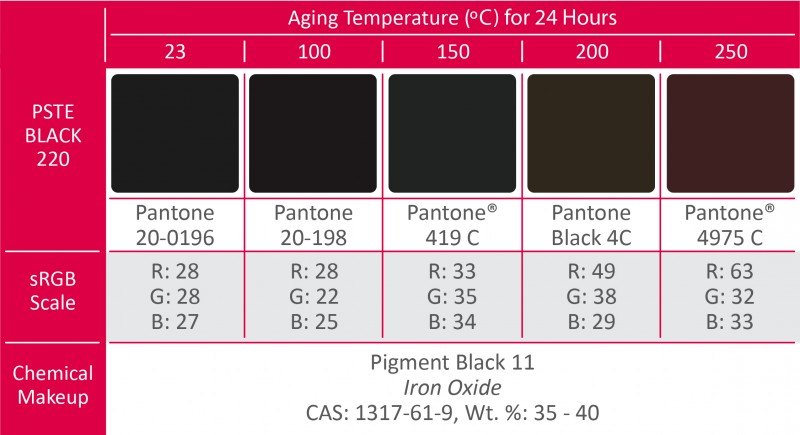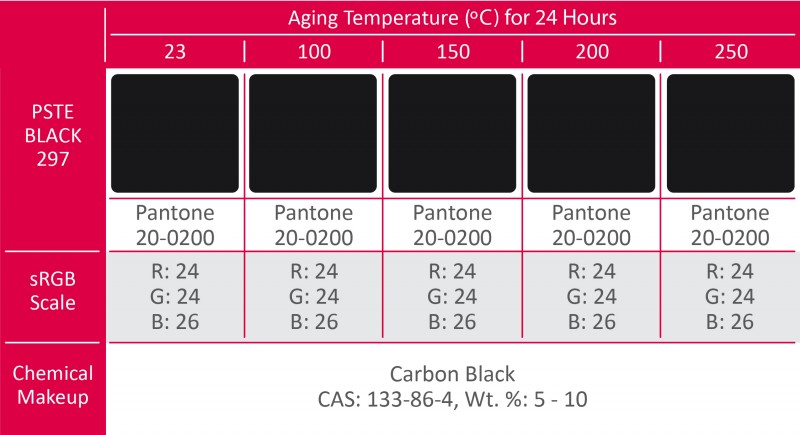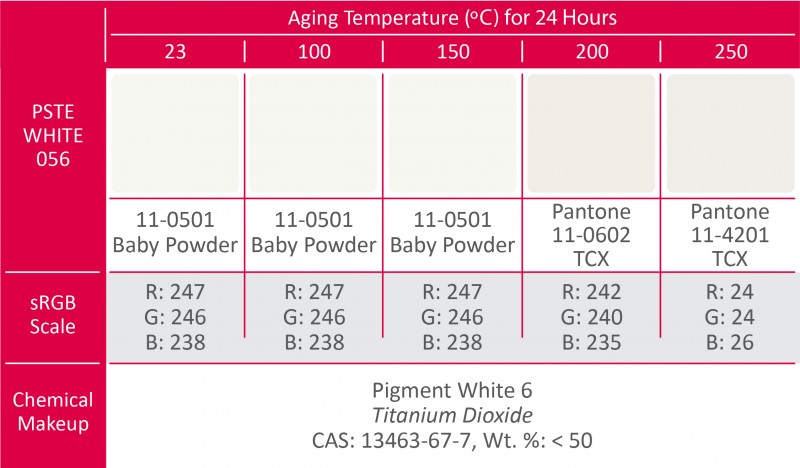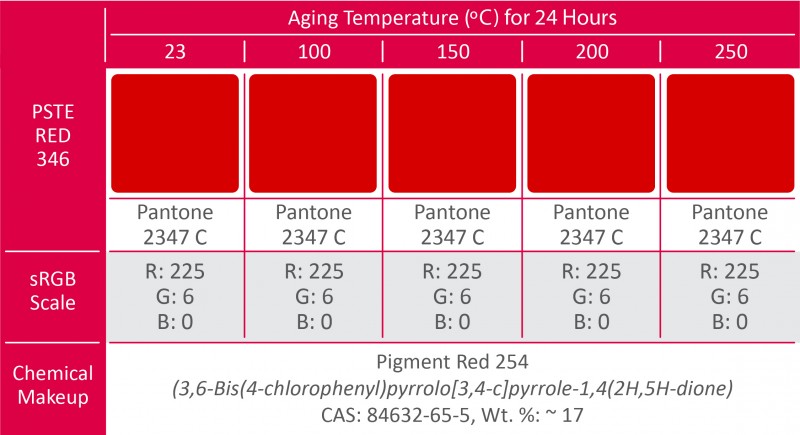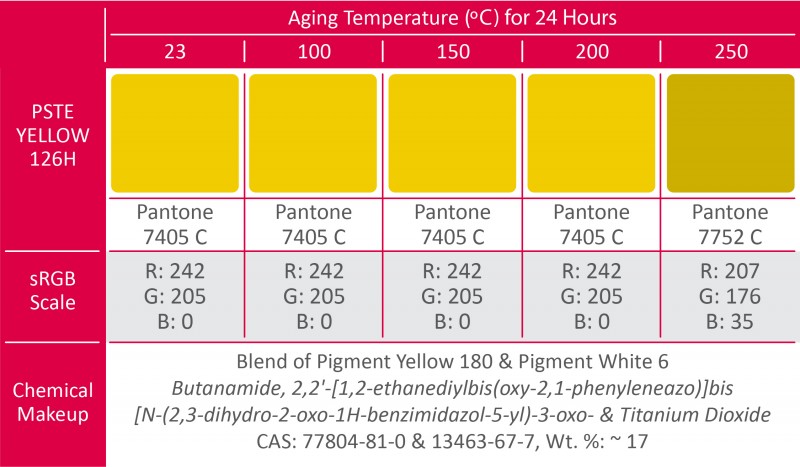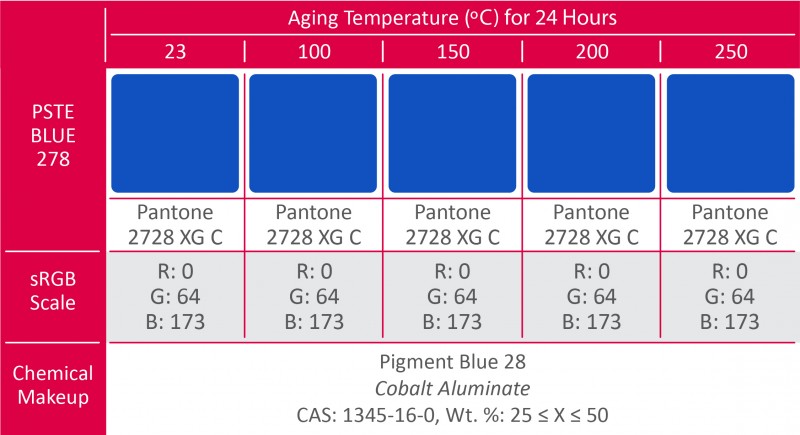Continuing our LSR pigment variation exploration from the previous Hot Topic, Shade Variation of Black & Gray for LSR Pigments, using a CAPSURE® color meter, a pocket-sized color identification tool, we tested how our colored pastes would change given exposure to various temperatures.
LSR Pigment BLACK / WHITE / RED / YELLOW / BLUE
Using a blend of Silopren® LSR 2070, a 70 shore A Liquid Silicone Rubber, and 2% pigment; we formed test slabs using some of our most common color compounds at Apple Rubber. Most silicone is pigment with colorant in the range 1% to 3%. From a previous Hot Topic, The Effects of Pigments on Medical Silicone, it should be noted that there are no significant changes to a material’s physical properties due to its pigmentation.
The test slabs underwent various heat ages at temperatures of 23℃ (73.4℉), 100 ℃ (212℉), 150℃ (302℉), 200℃ (392℉), and 250℃ (482℉) for 24 hours. The pantone color changes were measured using the CAPSURE® color meter to gauge how the material color changed based on the color paste temperature effect. In the tables below are our paste color identification descriptions, followed by the identified color image and description, the sRGB values (the standard RGB (red, green, blue) color space), and the chemical makeup used to make each colored paste.
The chemical make-up, often referred to as the regulatory information, contains information about the chemical pigment(s) that create each colored paste. Each pigment type has a unique Chemical Abstract Service (CAS) Registry Number that helps identify chemical substances in the LSR pigmentation paste.
Colored pastes are often created by varying pigment weight percentage or blending multiple pigments together. For example, different blue pigments can be blends of multiple colors like Pigment Blue 28 (Cobalt Aluminate) blended with Pigment White 6 (Titanium Dioxide), to make a lighter shade of blue. Pigmentation type is also responsible for how color is going to be expressed when exposed to higher temperatures. For example, Iron Oxide (Pigment Black 11) when exposed to high temperatures will result in a reddish/brown pantone compared to Carbon Black, maintaining a dark, black pantone.
Table 1: CAPSURE Color Meter Readings for PSTE Black 220
Table 2: CAPSURE Color Meter Readings for PSTE Black 297
Table 3: CAPSURE Color Meter Readings for PSTE White 056
Table 4: CAPSURE Color Meter Readings for PSTE Red 346
Table 5: CAPSURE Color Meter Readings for PSTE Yellow 126H
Table 6: CAPSURE Color Meter Readings for PSTE Blue 278
Interested in adding color to your LSR part? Contact our team today to learn more about how we can help you with your rubber products!

